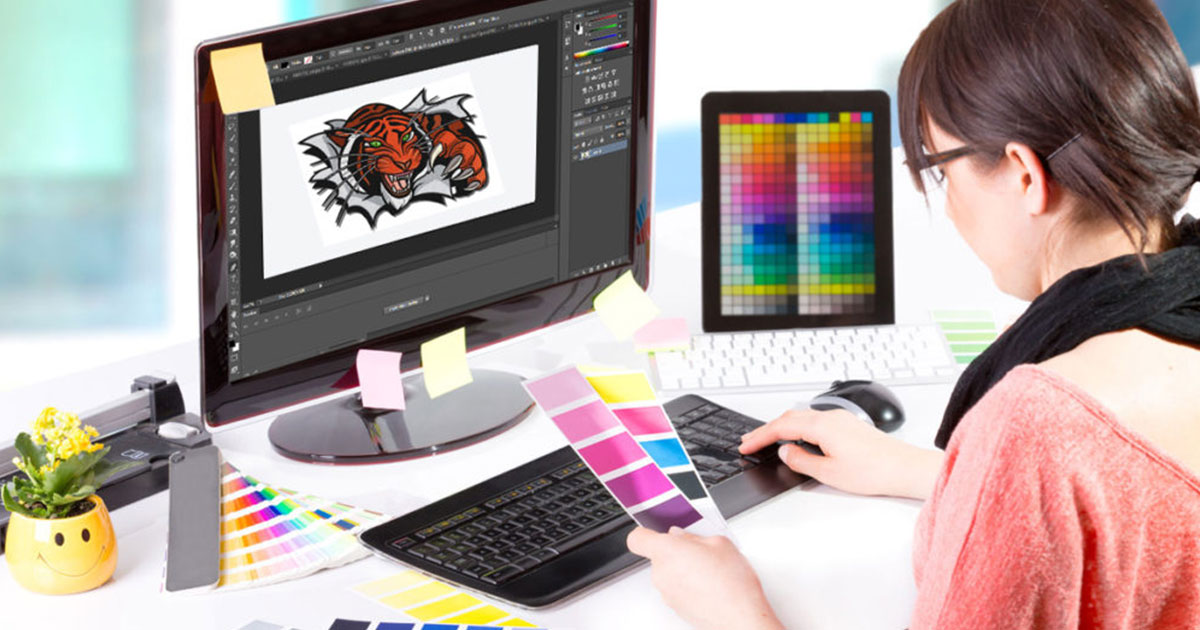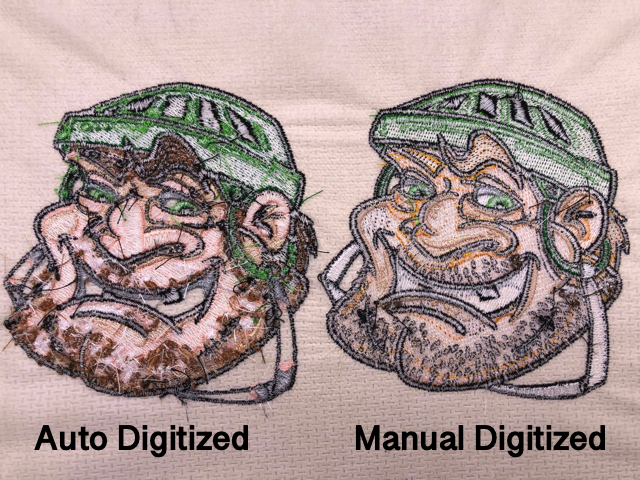Grasping the Needlework Digitizing Process: Your Ultimate Guide
Needlework digitizing is a meticulous craft that calls for precision and competence to convert intricate styles right into electronic formats for maker needlework. As artisans begin on this trip to understand the embroidery digitizing process, a comprehensive understanding of the fundamentals establishes the foundation for excellence. Beyond the rudimentary expertise exists a world of innovative software program, specialized devices, and nuanced techniques waiting to be checked out. By diving into the nuances of digitizing, one can unlock a world of creative opportunities and boost their needlework tasks to brand-new elevations.

Understanding Needlework Digitizing Fundamentals
Needlework digitizing essentials create the structure whereupon complex layouts are equated into machine-readable layouts for precise stitching. This first action in the needlework digitizing procedure is important for ensuring that the last stitched item is a devoted depiction of the initial layout. Comprehending needlework digitizing basics entails comprehending vital concepts such as stitch types, stitch direction, density, padding, and draw compensation.
Sew kinds play a vital function in identifying the aesthetic and textural outcome of the stitched layout. By choosing the ideal stitch type, whether it be satin, fill, or running stitch, digitizers can achieve the preferred effect and improve the total top quality of the needlework. Additionally, sew direction influences the circulation and measurement of the design, while thickness determines the spacing and insurance coverage of the stitches.
Moreover, underlay sewing provides security to the style by securing the material and stopping distortion during the needlework process. Draw payment is another crucial consideration to counteract the all-natural tendency of material to contract when sewn. Mastering these needlework digitizing basics is basic for producing professional-quality stitched products.
Choosing the Right Digitizing Software Application
Selecting the suitable digitizing software program is an important choice that substantially influences the efficiency and top quality of the embroidery digitizing process. Digitizing for Embroidery. When picking the right digitizing software application, it is important to take into consideration aspects such as the intricacy of designs you prepare to create, the user-friendliness of the software application, the degree of customer assistance provided, and the compatibility with your needlework device
There are numerous digitizing software options offered out there, varying from standard programs for newbies to advanced software application for expert digitizers. Some preferred options consist of Wilcom EmbroideryStudio, Hatch Needlework Software, and PulseID. These software use a variety of tools and functions to help you create elaborate designs easily.
Prior to making a choice, it is advisable to explore the various software program choices with totally free trials or trials to establish which one ideal fits your needs. Additionally, reading evaluations and looking for referrals from seasoned digitizers can supply beneficial insights into the strengths and weaknesses of each software (Digitizing for Embroidery). By very carefully evaluating your demands and comparing the functions of various digitizing software application, you can make an informed selection that enhances your embroidery site here digitizing process
Digitizing Devices and Techniques

Optimizing Style Settings for Embroidery
Grasping the complexities of design setups is fundamental in accomplishing optimum results in the needlework digitizing process, building upon the structure laid by comprehending digitizing devices and techniques. When enhancing layout settings for needlework, it is essential to think about factors such as stitch type, thickness, padding, pull settlement, and enrollment. Registration settings straighten different elements of the style properly, preserving general layout integrity.

Troubleshooting Common Digitizing Issues
When experiencing usual digitizing issues throughout the embroidery procedure, it is vital to recognize the source and carry out effective options quickly. One usual issue is stitch density concerns, where stitches may be also dense, creating the material to tighten, or as well thin, resulting in gaps in the layout. Adjusting the stitch thickness setups in the digitizing additional info software program can help solve this issue.
An additional regular challenge is string breaks during the embroidery original site process. This can take place as a result of different factors such as inaccurate tension settings, boring needles, or utilizing low-quality thread. Making certain appropriate upkeep of the needlework machine, consisting of regular needle changes and stress modifications, can minimize the occurrence of thread breaks.
Additionally, layout registration mistakes can cause misaligned aspects within the needlework layout. Inspecting the design placement in the digitizing software and making essential changes before stitching can aid in avoiding this issue. By attending to these common digitizing concerns immediately and properly, you can ensure a smoother embroidery procedure and high-quality finished items.
Final Thought
To conclude, grasping the embroidery digitizing process calls for a strong understanding of the essentials, the ideal option of software program, and understanding of tools and techniques. Maximizing design settings and troubleshooting common digitizing problems are vital steps in guaranteeing top quality needlework outcomes. By complying with these actions faithfully, one can accomplish precision and effectiveness in the digitizing process.
Comments on “Professional Digitizing for Embroidery: Fast and Reliable Service”